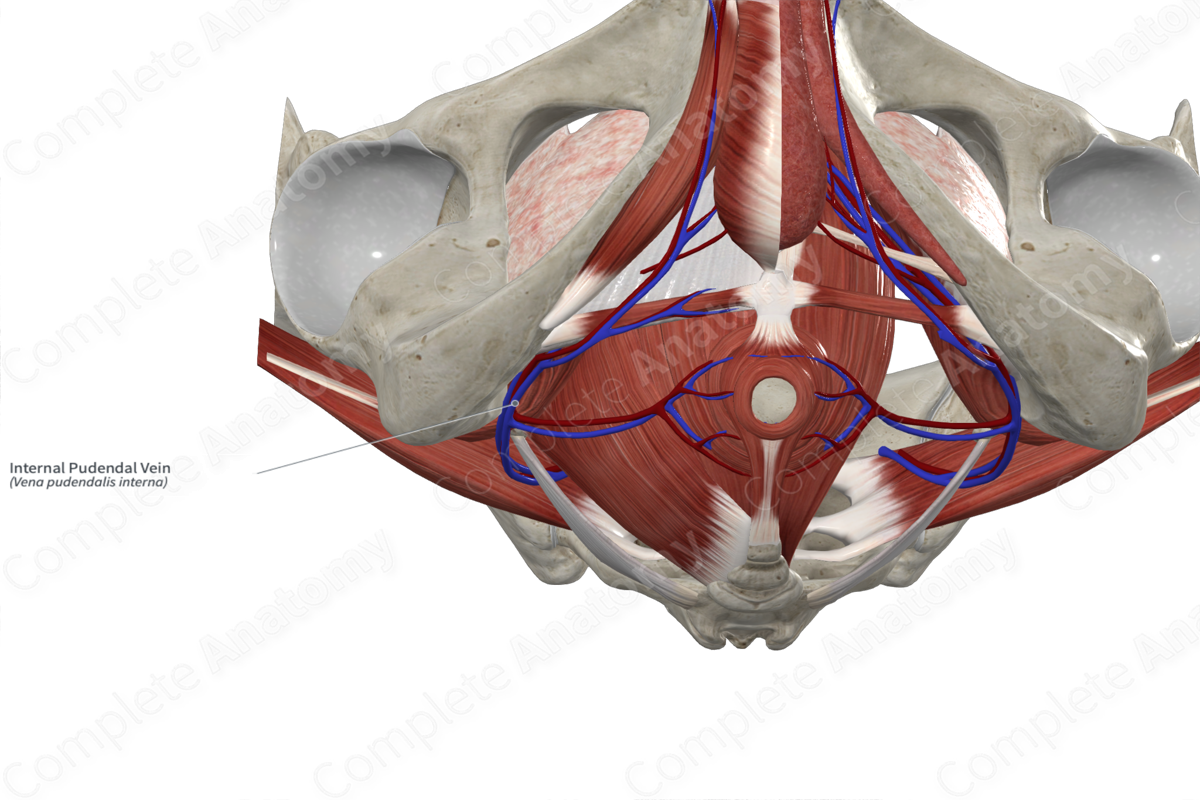
Quick Facts
Origin: Union of the venae comitantes of the internal pudendal artery.
Course: Ascends through the lesser and greater pelvis to drain into the internal iliac vein. It passes through the pudendal canal, lesser sciatic foramen, and greater sciatic foramen.
Tributaries: Inferior rectal vein, deep vein of the penis or clitoris, dorsal vein of penis or clitoris, deep dorsal vein penis or clitoris, vein of the bulb of penis or vestibule, and anterior and posterior scrotal or labial veins.
Drainage: Organs and skin of the external genitalia, bulb of penis or vestibule, spongy urethra, perineal muscles, and skin.
Origin
The venae comitantes of the internal pudendal artery unite to form a single internal pudendal vein at the superior aspect of the perineal membrane.
Course
The internal pudendal vein follows the course of the internal pudendal artery and pudendal nerve. From its origin, the internal pudendal vein eventually drains into the internal iliac vein. Along its course, the internal pudendal vein travels through the pudendal canal on the lateral wall of the ischiorectal fossa. It ascends through the perineum and passes through the lesser sciatic foramen. It then travels within the gluteal region, inferior to the piriformis muscle, and passes through the greater sciatic foramen to enter the true pelvis.
Tributaries
The internal pudendal vein receives many tributaries of the external genitalia:
- inferior rectal vein;
- deep vein of the penis or clitoris;
- dorsal vein of penis or clitoris;
- deep dorsal vein penis or clitoris;
- vein of the bulb of penis or vestibule;
- anterior and posterior scrotal or labial veins.
The distal portion of the vagina is also drained by the internal pudendal vein.
Structures Drained
The internal pudendal veins drain the organs, skin and muscles of external genitalia, and perineum. This includes the bulb of the vestibule in females and the bulb of the penis and spongy urethra in males.
During sexual arousal, venous engorgement of these veins aid in the erection of the clitoris or penis and bulbs of the vestibule or penis.
Learn more about this topic from other Elsevier products
Vein

A venous sinus is a vein with a thin wall of endothelium that is devoid of smooth muscle to regulate its diameter.




